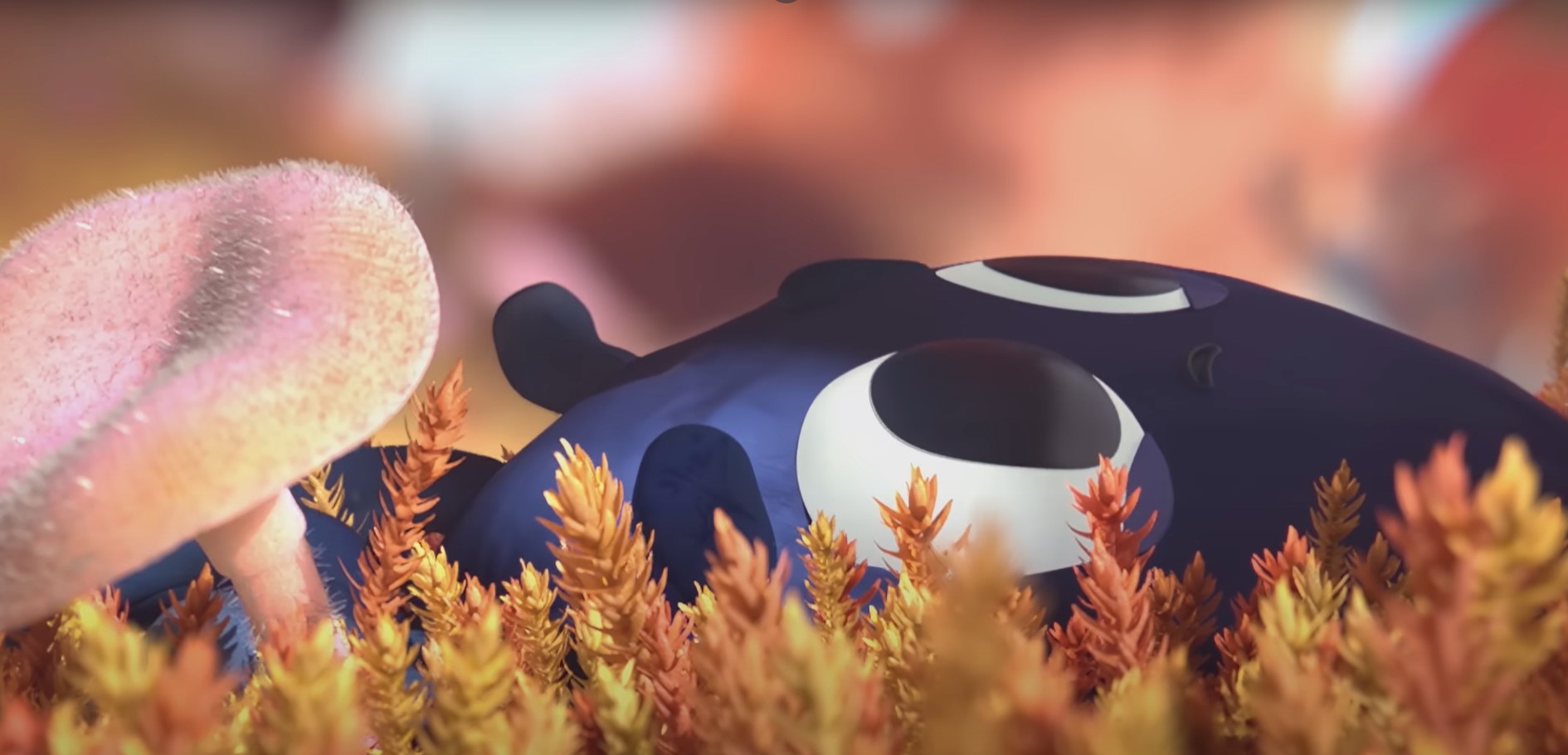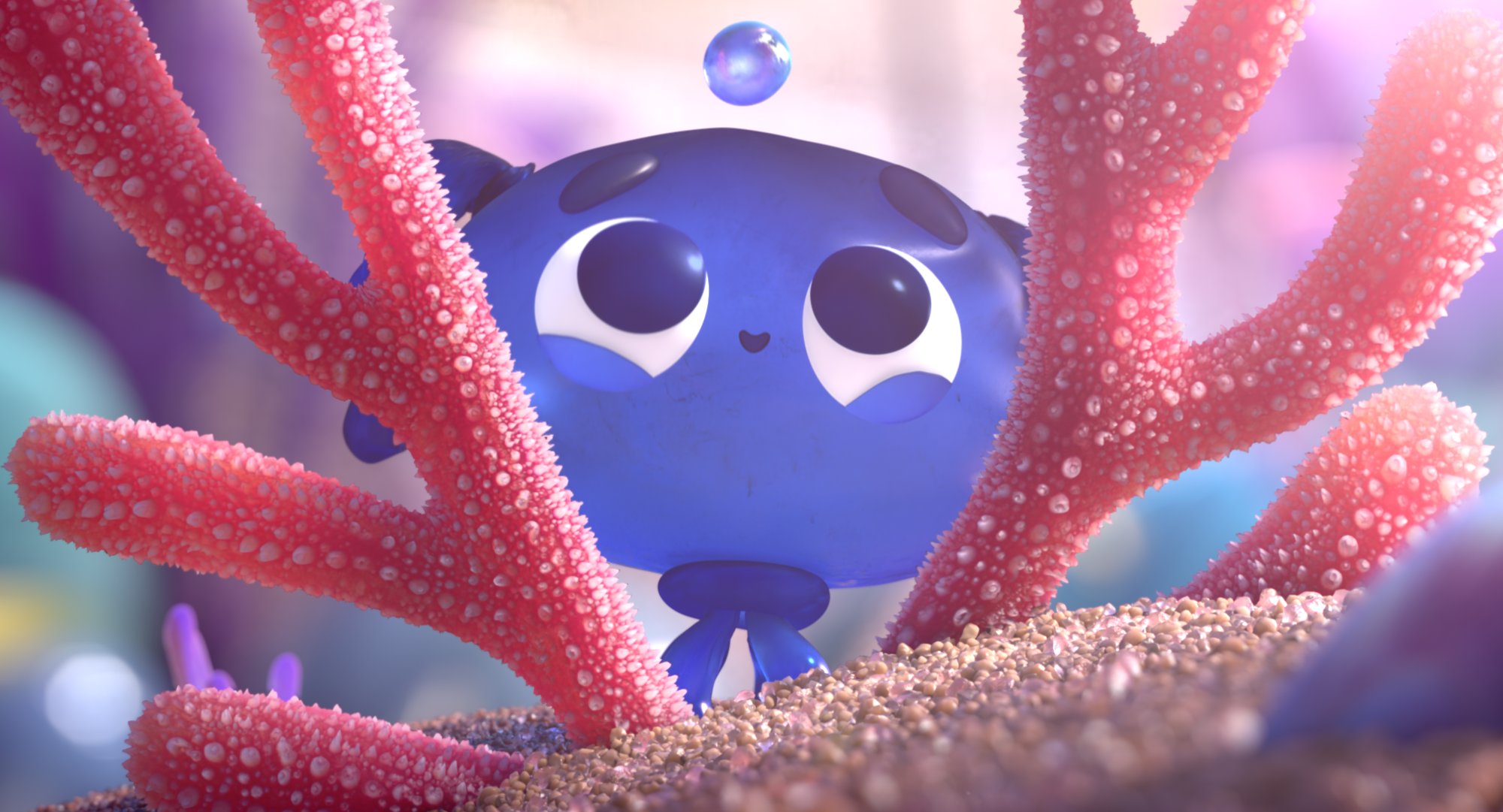A poetic short film
In this poetic and inventive film from the ESMA 2022 graduating class, directors Sydney Baillargeon, Jules Thibaudeau, Perrine Dolleans, Baptiste Vaneenaeme, Héloïse de Gentile, Léna Vanheeghe and Alexandra Sarrasin take us into an astonishing universe populated by fascinating vegetation.
To understand how this story came about, and how it evolved through the various stages of production to become a short film in its own right, we interviewed two of the film’s co-directors, Héloïse de Gentile and Alexandra Sarrasin.
This was an opportunity to talk to them about specific but essential aspects of 3D animation, starting with the transposition of an idea into an audiovisual narrative, a challenge in itself.
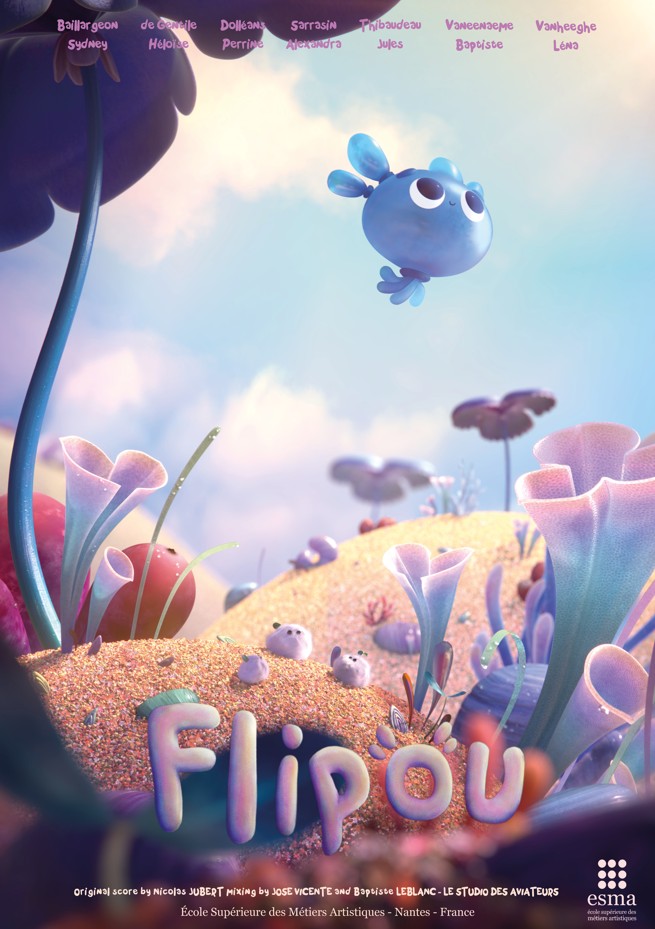
From idea to film, a long road strewn with pitfalls
Before Flipou came to life on screen, the script underwent a number of rewriting phases. Not only to “clarify the message”, as Héloïse de Gentile points out, but also to meet certain production constraints and create “a story that spoke to all of us: structured, dynamic and profound”, adds Alexandra Sarrasin.
From a story that was originally completely different, the Flipou team saved only its main character to rethink its narrative around a new adventure, new settings and new companions for its protagonist.
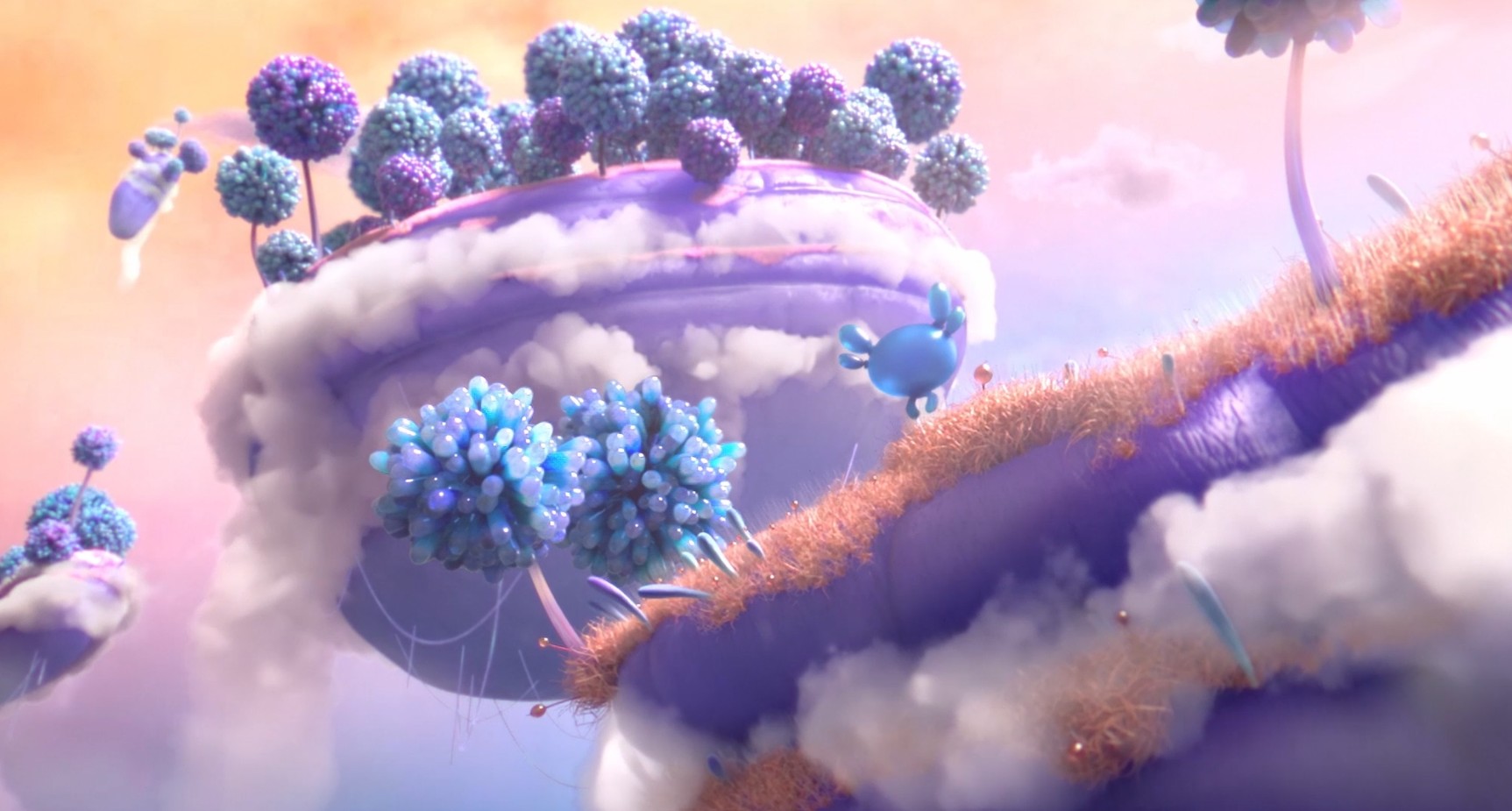
Once this framework had been established, the animatics allowed us to integrate lighting choices designed to reproduce the course of a day (from dawn to midday sun to night, including the inevitable setting sun), as well as adjusting certain passages to comply with the recommended maximum length of 5 minutes 30 seconds.
“This maximum time limit was the same for all the short films in our school, and it was very important to stick to it so that we could finish the final rendering on time.”
Between the animatics and the final version, certain actions were also modified, to enhance on-screen legibility and to meet technical constraints.
A touching protagonist and a host of technical challenges for the team
Flipou, the surviving protagonist of the team’s first script created by Sydney Baillargeon, was born out of the desire to create an endearing, lost and naive character, rather like Dory as a child in Dory’s World.
In terms of material, Flipou is made from the skin of a balloon, an important choice both technically and thematically, as it evokes lightness, joie de vivre and fragility.
“This feature was inspired by the animated series The Incredible World of Gumball, where the characters are made from a variety of textures. This encouraged us to also create a creature made from an atypical material,” adds Sydney.
Working with a balloon in 3D animation is no easy task. In fact, for Héloïse de Gentile, it was one of the biggest challenges of the production, as Flipou had to look different depending on how much he inflated.
In total, the team created five main variants: deflated, normal, over-inflated, bioluminescent, and its final version, similar to a Pompon. “This meant more work for the whole team, in terms of texturing and shading , as well as animation and rig.
For the shading, in addition to the fact that balloon material is not easy to reproduce, the transition between these states had to be as fluid as possible.
To achieve this, I used realistic shading, which meant that the more Flipou deflated, the less light came through, so the material naturally got darker”.
Another complex sequence, the explosion of Flipou’s paw as he flees from the frost peaks, was the subject of much discussion. “Given that his skin is made of a translucent material that lets light through,” explains Héloïse de Gentile, “the crack had to remain invisible before the shot, and creating the pieces required additional fxs as well as animation work. So we considered a simpler alternative, but fortunately we were able to keep the explosion.”
Giving life to plants, the fruit of structured work and a touch of childish madness
The originality of the project also lies in its sets, which Alexandra Sarrasin describes as veritable scenes of colour . “Our heads were filled with lots of colourful little pictures that inspired each other, and that we wanted to materialise and share with everyone. We wanted to travel through these paintings and take people with us. Personally, I’ve always had a real affection for colour and that’s what guided me throughout the project.”
To share this task, the team appointed a person to be responsible for the look and organisation of each of the environments, to ensure visual consistency. Baptiste Vaneenaeme was responsible for Kulinot (the first area where Flipou lands), Alexandra Sarrasin for the Grand Milieu (the ocean area where Flipou discovers his power), and Héloïse de Gentile for Mount Disconton (the frozen mountain where the edelweiss grows).
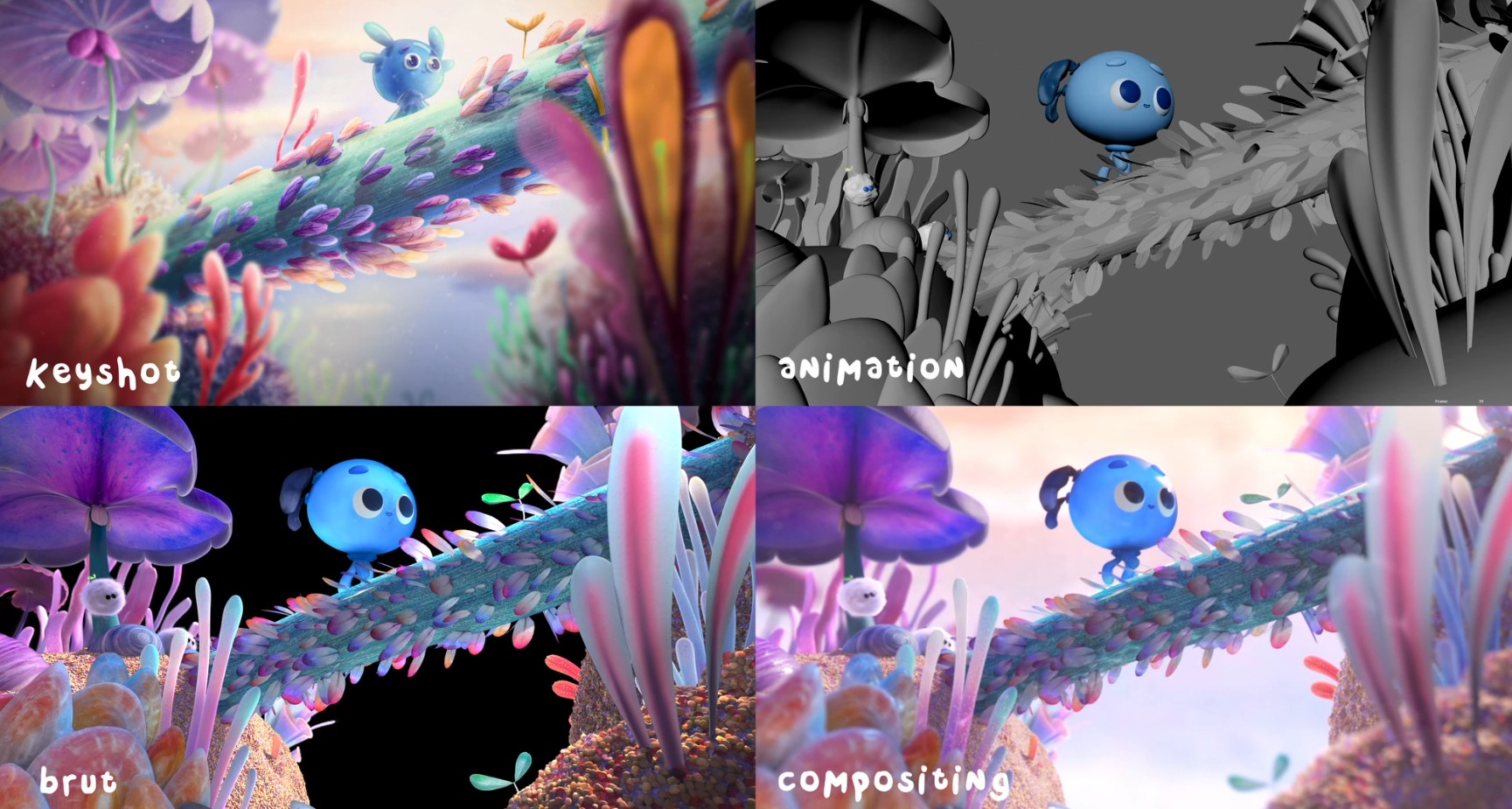
What about plants?
Some of those seen in the sets were in fact selected by children! “We were lucky enough to present our project to a class of schoolchildren at the Festival des 3 Continents in Nantes”, says Héloïse de Gentile.
“During the course of this workshop, which was devoted to the creation of an animated film, we showed several versions of plants and invited the children to vote for their favourites. The ones that were chosen were incorporated into the film!”
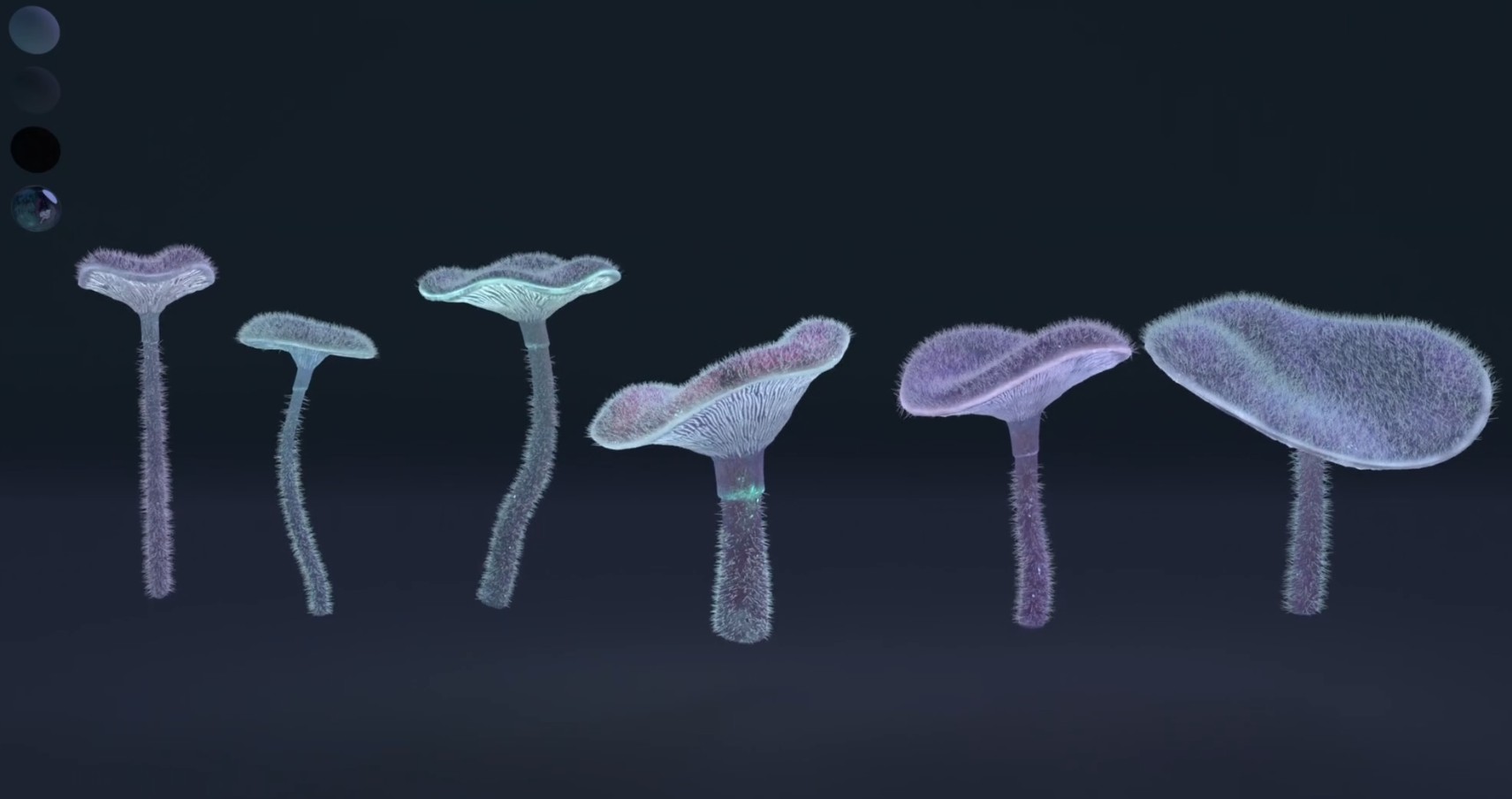
Tassels, an example of successful grooming
In 3D animation, grooming covers the animation of hair, eyebrows and other animal fur, all elements made up of very fine geometric shapes and requiring a high level of technical mastery, as well as a real sense of detail.
It’s thanks to this process that the pompons, Flipou’s chewy companions, have come to life.

“However, achieving a level of detail similar to that of cotton requires very dense grooming,” explains Héloïse de Gentilé, who is responsible for this aspect of the film.
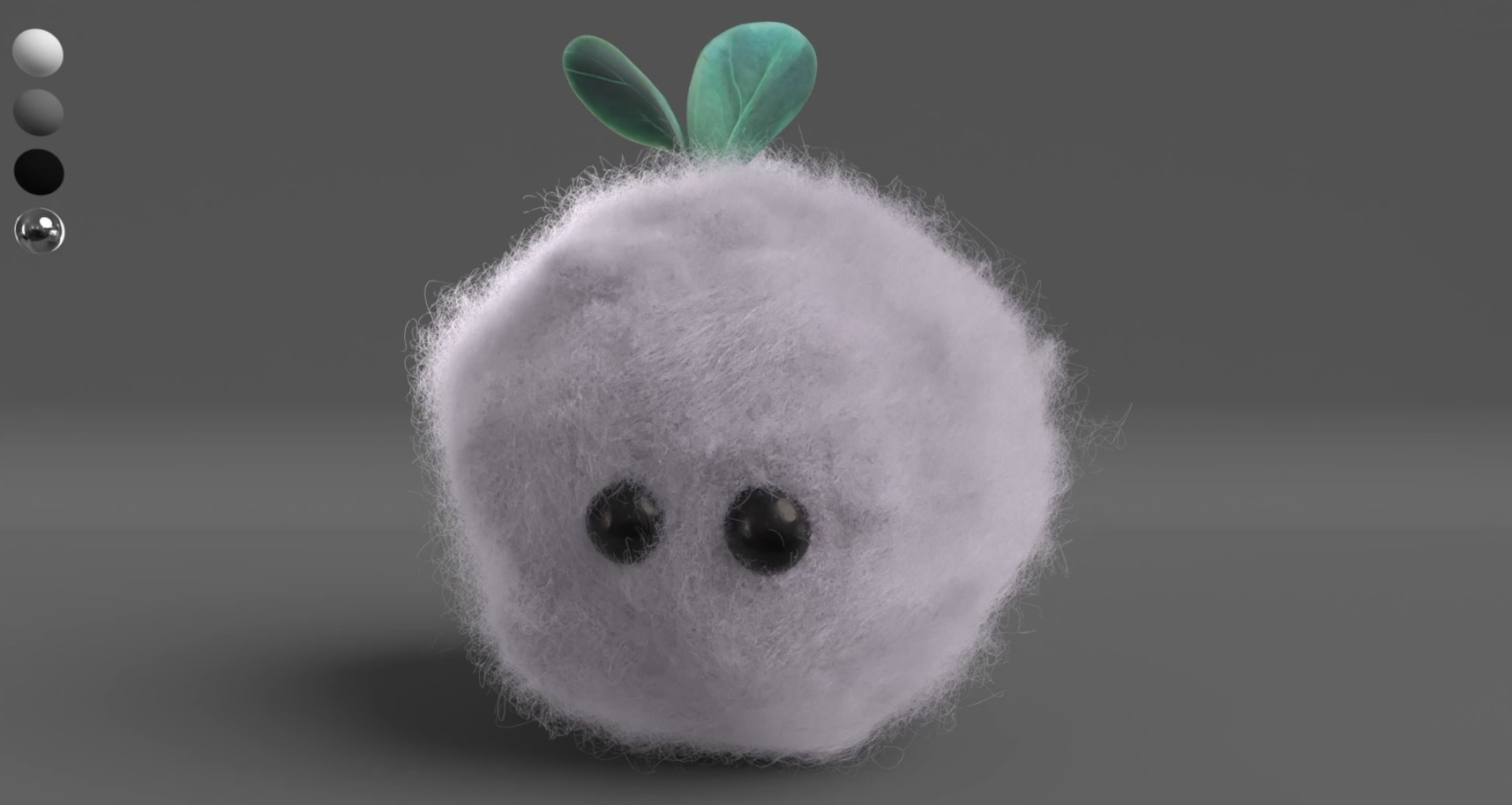
“This would have added considerably to rendering times, which was not viable from a production point of view. So we created three different versions for each type of Pompon: a very detailed one for close-ups, and two lighter versions for medium and wide shots.
This choice required a bit of organisation to determine which version to import into each shot, but it enabled us to significantly reduce rendering times.”
What do Héloïse and Alexandra take away from this project?
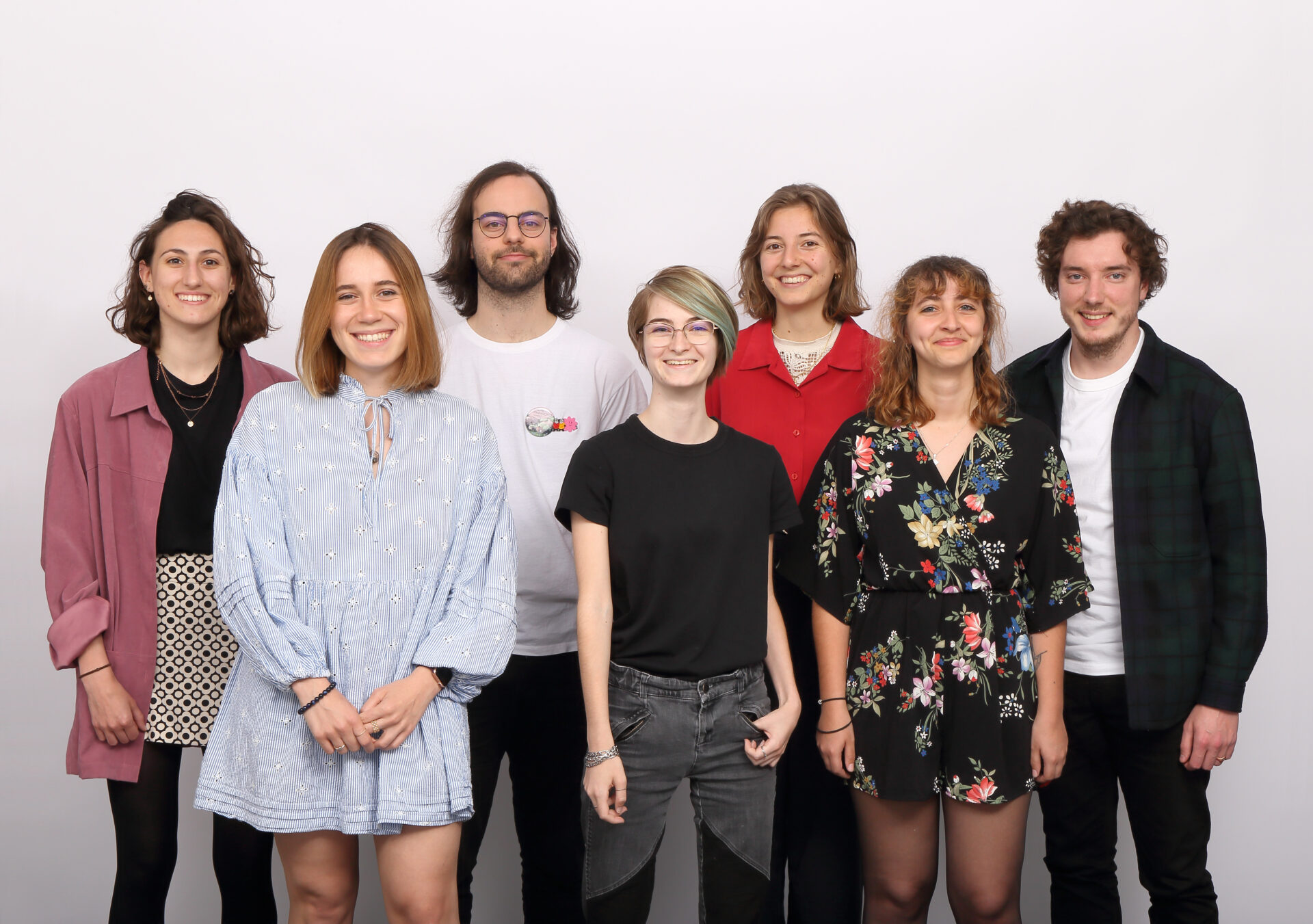
For Alexandra Sarrasin, it is above all the human experience of a close-knit team that is still with her today.
“I really enjoyed working as part of a team because there was this support for each other. This feeling that together, by pooling all our abilities, we can achieve great things.
It wasn’t easy every day, because we had to get organised and make sure that everyone had something to contribute to a film with so much at stake for a final-year student.
But this project was close to our hearts and we all wanted to do it right. At the end of the day, it was a very intense experience in human terms, where we experienced an enormous amount in a very short space of time.”
Héloïse de Gentile admits to being attached to the film as a whole.
“We put so much work and intention into it that it’s impossible for it not to have a special place in my heart. If I had to choose, I’d say the Pompons are my favourite, they’re so cute.
With these creatures, I’m also very keen on the visual transition between the different states (normal, frozen, bioluminescent) of our sets, characters and assets.
The shading and texturing work was particularly demanding, but the end result was really worth it!”
Discover the film Flipou, available in its entirety on the ESMA Movies YouTube channel:
